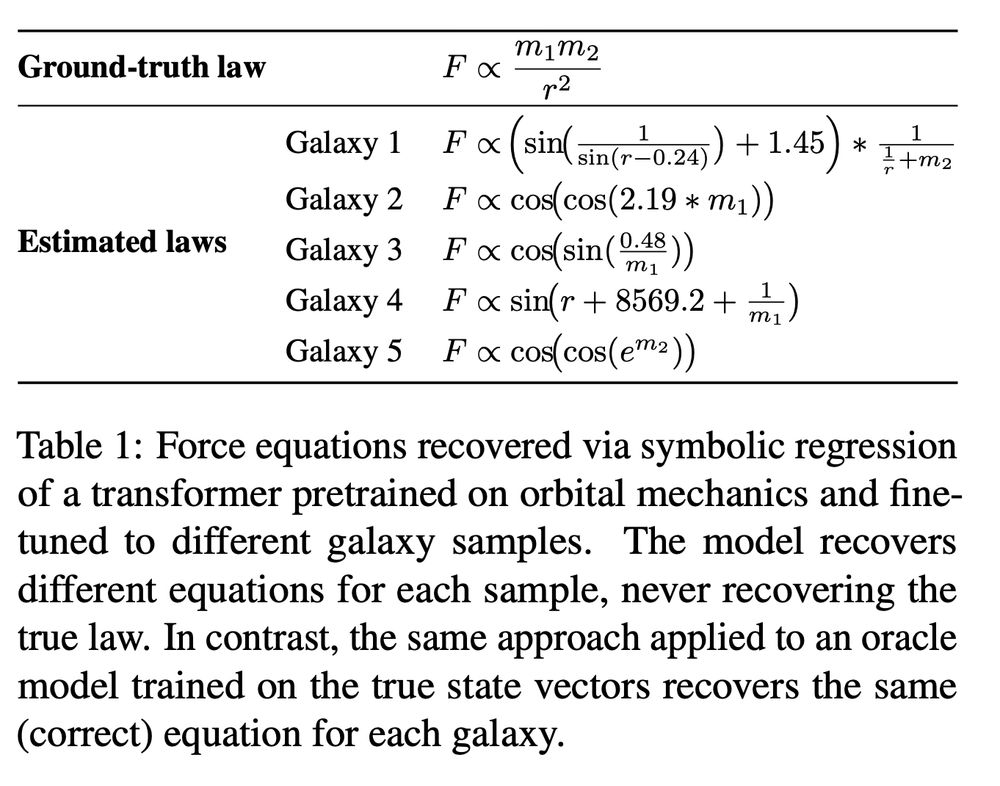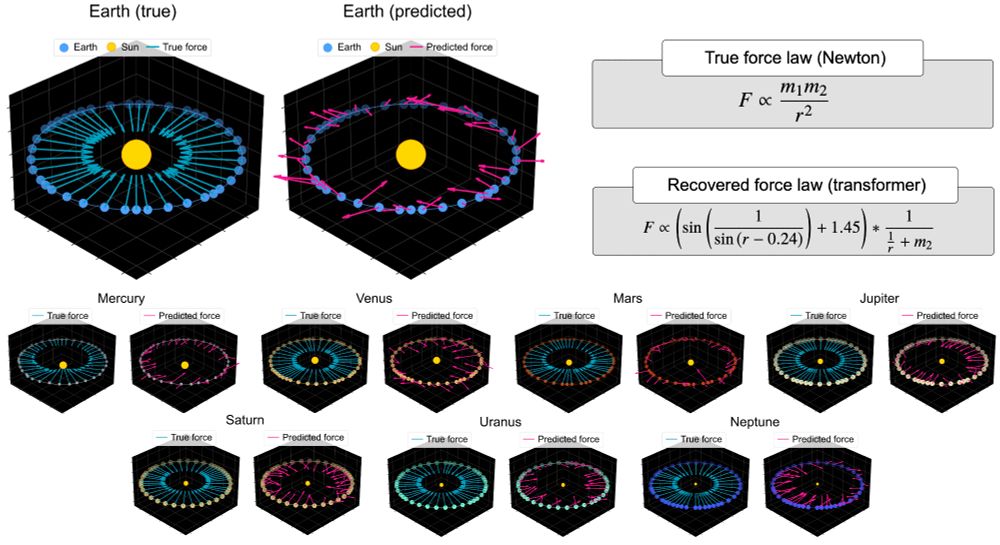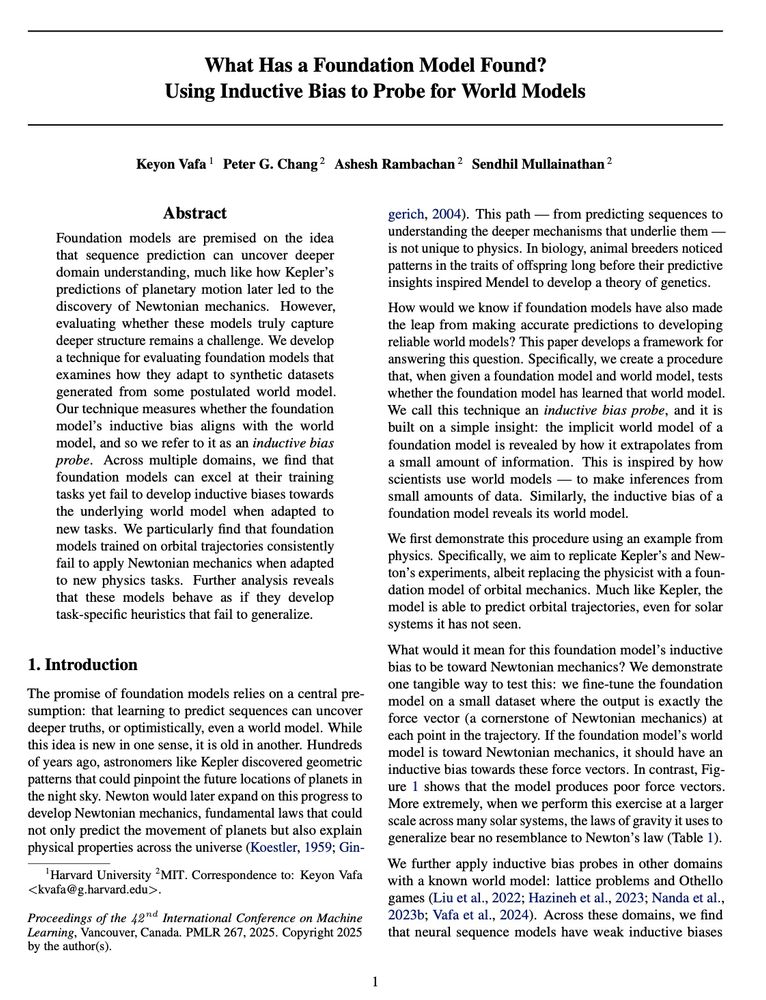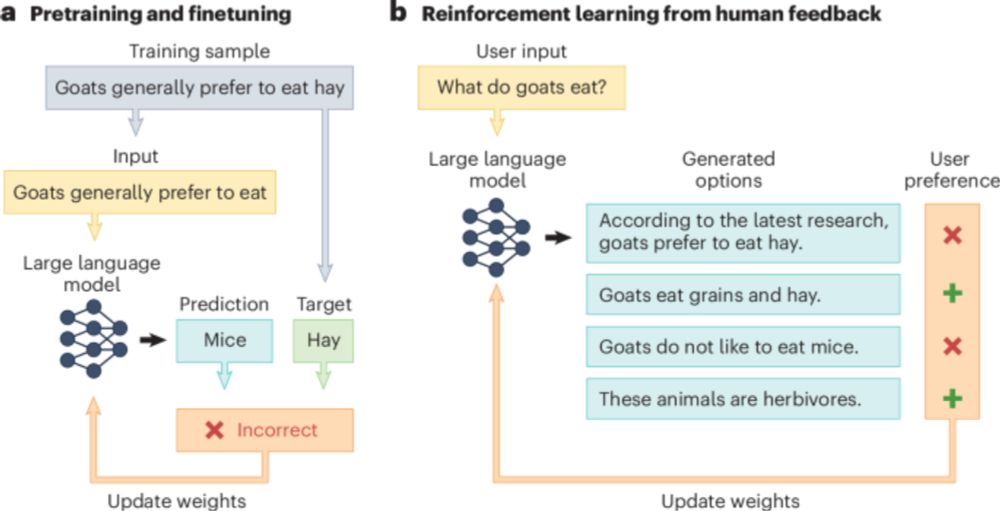Keyon Vafa
@keyonv.bsky.social
170 followers
100 following
28 posts
Postdoctoral fellow at Harvard Data Science Initiative | Former computer science PhD at Columbia University | ML + NLP + social sciences
https://keyonvafa.com
Posts
Media
Videos
Starter Packs
Reposted by Keyon Vafa
Charlie Rahal
@crahal.com
· Aug 27
Reposted by Keyon Vafa
Charlie Rahal
@crahal.com
· Aug 14
Keyon Vafa
@keyonv.bsky.social
· Jul 14

What Has a Foundation Model Found? Using Inductive Bias to Probe for World Models
Foundation models are premised on the idea that sequence prediction can uncover deeper domain understanding, much like how Kepler's predictions of planetary motion later led to the discovery of Newton...
arxiv.org
Keyon Vafa
@keyonv.bsky.social
· Jul 14

Evaluating the World Model Implicit in a Generative Model
Recent work suggests that large language models may implicitly learn world models. How should we assess this possibility? We formalize this question for the case where the underlying reality is govern...
arxiv.org
Keyon Vafa
@keyonv.bsky.social
· Jul 14
Keyon Vafa
@keyonv.bsky.social
· Jul 14
Keyon Vafa
@keyonv.bsky.social
· Jul 14
Keyon Vafa
@keyonv.bsky.social
· Jul 14
Reposted by Keyon Vafa
Reposted by Keyon Vafa
Nikhil Garg
@nkgarg.bsky.social
· Mar 10













